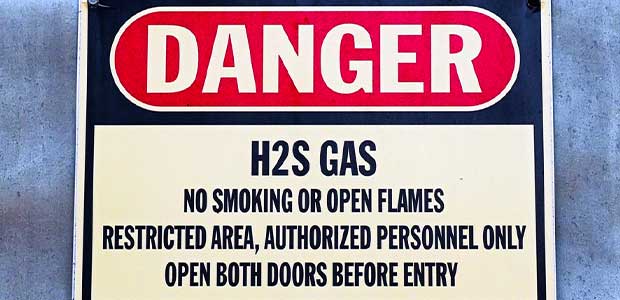
Hydrogen Sulfide: Understanding Exposure Risk in the Oil & Gas Sector
Protecting workers against avoidable exposure is the right thing to do.
- By Peter Barratt
- Aug 01, 2022
It’s no secret that the upstream and downstream oil and gas sector is necessary for powering the modern world. Oil, gas and coal products are still in high demand, often requiring people to work in difficult conditions that pose a risk to health and safety for workers, the public and the environment.
However, as technology has advanced, we have improved our recognition of the hazards of operating in proximity to these resources, analysing and mitigating the impact to worker, public and environmental health through effective monitoring and gas detection technology. Reducing the risks workers face through laws, technology, equipment and training is the best method of creating a safe working environment that understands the risks involved.
One of the biggest hazards associated with upstream and downstream oil and gas is the risk of hydrogen sulfide exposure. Hydrogen sulfide (H2S) occurs naturally in crude oil, and increasingly evidence suggests that it is found in deep coal seam mines. Sour gas fields are another example of high concentrations of hydrogen sulfide occurring, combined with natural gas deposits. As the challenge of extracting oil, coal and gas for use becomes more difficult, the petrochemical industry is turning to other forms of extraction, such as fracking, deep seam mining and deepwater drilling. Given that hydrogen sulfide is such a risk to workers, care must be taken to protect and prevent exposure, particularly when working with lesser-known methods and in more dangerous settings, such as sour gas fields and the sweetening process.
Between 2001 and 2017, the U.S. Bureau for Labor Statistics reported 106 worker deaths as a result of exposure to hydrogen sulfide. In China, hydrogen sulfide exposure through deep seam coal mining operations has caused 50 fatalities since 2006. There are, unfortunately, examples of workers on pipelines or manholes being overcome with hydrogen sulfide due to a lack of measurement and monitoring, or a lack of safety equipment, such as ventilators, masks and gas detectors. Understanding the potential risk of exposure to hydrogen sulfide is important in highlighting why there is such a need for personal gas detection and PPE to be implemented at all times.
This article originally appeared in the July/August 2022 issue of Occupational Health & Safety.